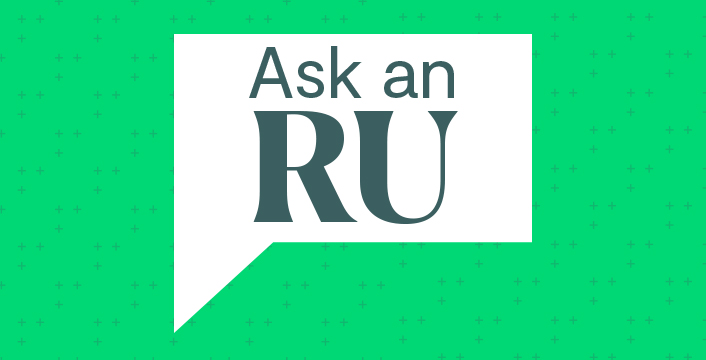[Ask an RU] Underwriting Mortgages with Student Loan Debt
With a record 44.7 million Americans with some level of student loan debt, it’s very likely you have experience underwriting mortgages with student loan debt as part of the file. But if you haven’t, I have some tips to help you properly qualify and underwrite mortgages where the debt to income (DTI) includes some sort of student loan debt.
The good news is Fannie Mae and Freddie Mac have made it easier for us with their updated guidelines by taking the mystery out of how and when to include student loan debt in your DTI ratio. Now, with the possible additional layer of a COVID forbearance on student loan debt, this has made it a little more confusing for some on how to evaluate this debt.
Frequently Asked Questions on Underwriting Mortgages with Student Loan Debt
As a Regional Underwriting team, we get several questions around underwriting files with student debt in the DTI. Some include:
- When exactly do you have to include a payment?
- How much should that payment be?
- What if it’s $0 or in deferment on the credit report?
All great questions, which I’ll address for you below as well as how student loan debt can impact your loan and the borrower’s DTI in different ways.
Impacts of Student Loan Debt on DTI
There are few areas in our very large mortgage world of guidelines that are black and white, but the good news is, I would consider this to be one of them. As you evaluate DTI, you may have alternatives and other options that you might not have even been aware of that could help your borrower. Let’s get started.
Fannie Mae Guidelines
Fannie Mae’s guidelines are very clear and specific on how to treat your student loan debt. Fannie Mae’s Selling Guide section B3-6-05 discusses Monthly Debt Obligations. Student loans are addressed specifically in this section.
Determining the Student Loan Payment Amount
Always start with the credit report. Use the credit report payment amount verified on your credit report for all student loan debt. If the credit report does not reflect a payment or the payment is incorrect, you can use the payment on the student loan documentation, i.e., a student loan statement or the actual student loan agreement and amortize the payment manually. You could even ask your Credit Reporting Agency (CRA) to try to help with a credit supplement.
If none of that works or if the credit report lists $0 as a monthly payment, you will still need to determine what payment amount needs to be included in your DTI. When a $0 payment is listed on the credit report, you can’t stop there. If the borrower has an income-driven payment agreement, you can use the payment from this agreement in your DTI. And YES, if the income-driven payment agreement lists $0, you can use $0 for a monthly payment. This is the only scenario when $0 would be permitted.
What if the Student Loan Is Deferred or in Forbearance?
Deferment and/or forbearance is temporary, and a payment will become due sometime in the future. You may need to dig a little further to determine what the future payment might be. Here are more of those alternatives and options I mentioned earlier:
- Use the payment verified on the student loan statement or loan documentation; this would be considered the fully amortized payment amount
- You can use 1% of the outstanding student loan balance for those loans that are in deferment or forbearance even if it is lower than the actual fully amortized payment amount
Freddie Mac Guidelines
Freddie Mac ’s guidelines are similar to Fannie Mae’s. Freddie Mac’s Selling Guide section 5401.2 provides the details around what liabilities need to be included in your DTI. Student loans are specifically addressed here.
You’ll want to follow the guidance listed above in the Fannie Mae section of this article with one big exception: If your credit report verifies $0 for a monthly payment, you can use .50% of the outstanding student loan balance as verified on the credit report vs. Fannie Mae who requires you use 1%. This could obviously make or break your loan when calculating your DTI.
When Can I Exclude a Student Loan Payment Entirely?
You can exclude a student loan payment entirely if the borrower’s situation meets all these statements:
- The student loan is deferred or is in forbearance; and
- The student loan will be entirely forgiven, canceled, discharged or in the case of an employment-contingent repayment program where it would be paid by the employer at the end of the deferment or forbearance; and
- The borrower is eligible or approved for student loan forgiveness, cancelation, discharge or employment-contingent repayment program; and
- The seller is not aware of any circumstances that will make the borrower ineligible in the future. Evidence of this eligibility or approval can only come from the student loan program or the employer as applicable.
That’s a lot of ands but good to know in the event a borrower could qualify for this situation.
If you have questions about student loan debt scenarios, feel free to reach out to the Enact Regional Underwriting Managers team at 800-444-5664 Option 2. There are 11 Regional Underwriting Managers coast to coast, all experts in mortgage insurance and in the mortgage industry overall.
Until next time, hope you all are staying safe, happy and healthy!
Amy Hopkins has been with Enact for over 16 years. Amy is the Southeast Regional Underwriting Manager, is a Certified Residential Underwriter, has an extensive underwriting background and is a mortgage industry expert for more than 30 years. Amy is a subject matter expert for Construction to Perm loan transactions and specializes in all things mortgage.



Excellent article. Great Information